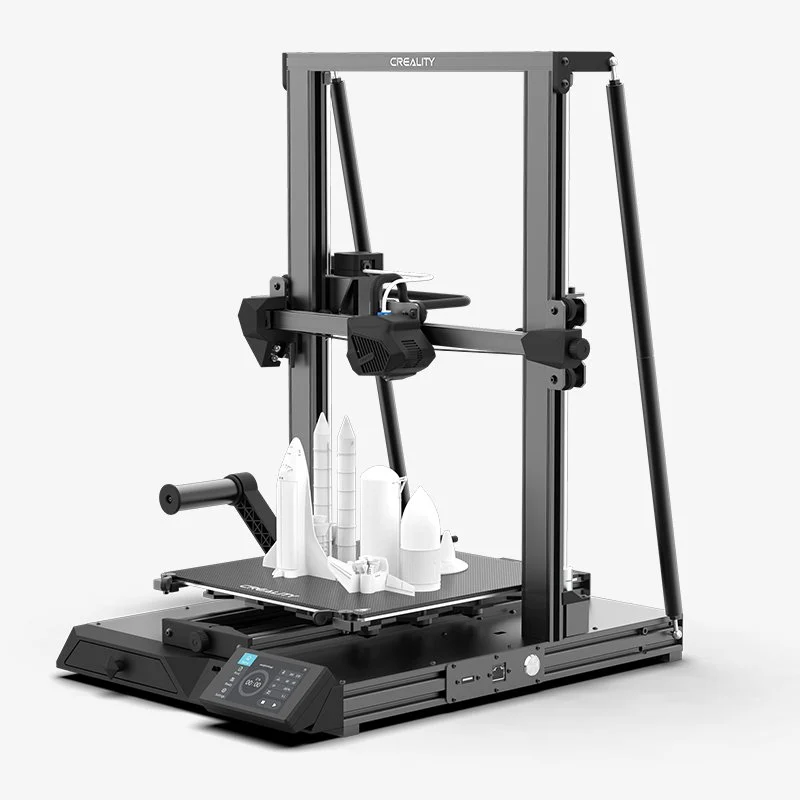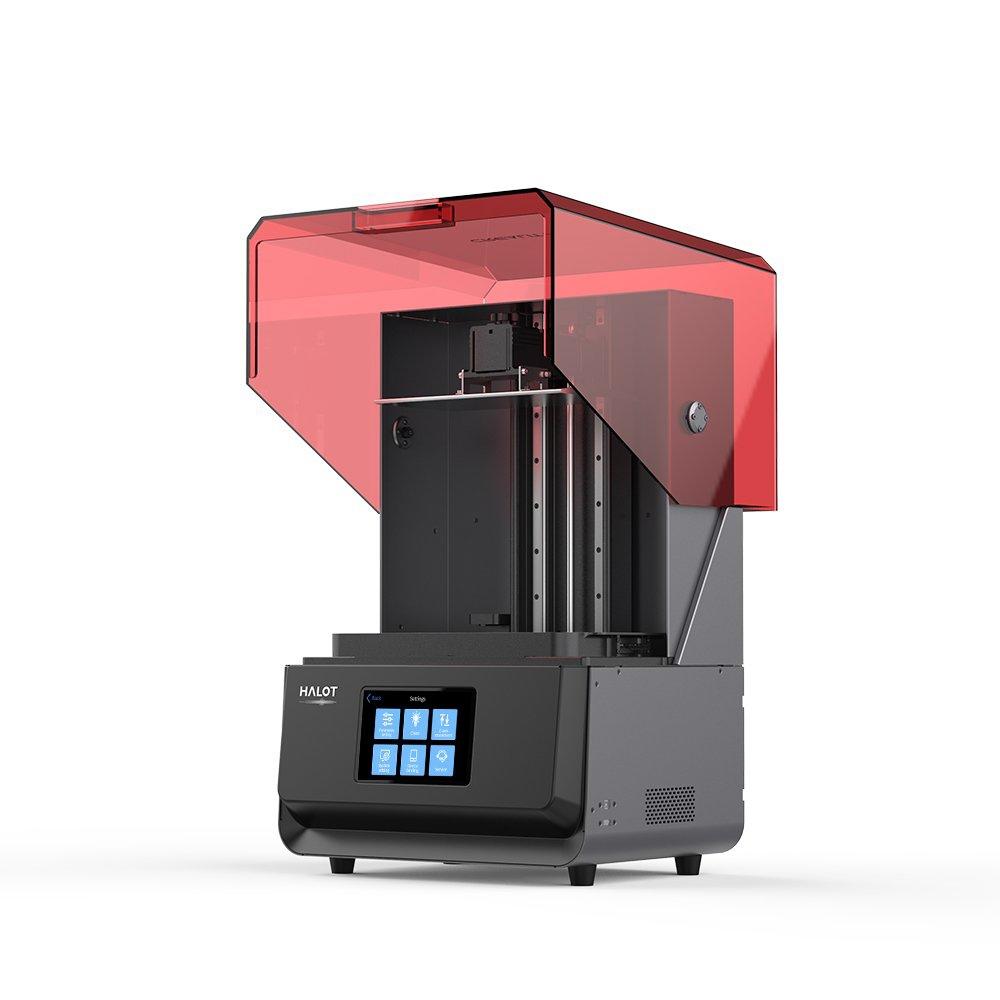Compare CR 10 Smart vs Halot Max
Comparison between the best 3D printers
Choose the best 3D printer at the best price. The cheapest 3D printers are here.
Buy a 3D printer here with 3D Fila.
 |
 |
|
| Model | CR 10 Smart[BUY CR 10 Smart] |
Halot Max[BUY Halot Max] |
| Printing Material | Filament | Resin |
| Buy Filament for Creality 3D CR 10 Smart | Buy Resin forCreality 3D Halot Max | |
| Estimated price | $520,00 | $3000,00 |
| Manufacturer | Creality 3D | Creality 3D |
| Release Year | 2021 | 2021 |
| Print Volume [mm] | 300x300x400 | 293x165x300 |
| Printer Size [mm] | 578x522x648 | 480x387x770 |
| Weight [kg] | 14 | 32,5 |
| Power Loss Recovery | YES | NO |
| Maximum Resolution [mm] | 0,1 | 0,03 |
| Processor | Processador ARM STM32F103 RET6 CPU | |
| Display | Display touchscreen 4,3'' | Display touchscreen 5'' |
| Power Supply | 110/220V / 350W | |
| Connectivity | SD / USB / Wi-Fi | SD / USB / Wi-Fi |
| Operating systems | Windows, Mac, Linux | Windows, Mac, Linux |
| Date of registration in the system | 2022-11-04 | 2022-11-04 |
| Release date | 2021 | 2021 |
| Extra features | The Creality CR-10 Smart stands out for its stability, with a dual Z axis and additional supports, minimizing oscillation in high prints. Its redesigned hotend offers better cooling, expanding the range of usable materials. The glass printing surface, with automatic leveling, facilitates the adhesion and removal of parts. Includes Wi-Fi / LAN connection and automatic shutdown after printing, adding convenience and efficiency. It features an effective single-gear extruder and an intuitive touchscreen interface, despite some firmware issues. | The Halot Max printer stands out for its large print size (293 x 165 x 300 mm) and uses SLA technology. It has an integral light source for improved accuracy and a strong core with an advanced operating system. Its Z-axis module ensures high precision, supported by efficient slicing software. The machine offers online OTA updates and boasts an adjustable layer thickness between 10 and 200 microns. Its XY-axis resolution is 3840*2160, with 0.05 mm accuracy, and an integral 405nm light source. The printer includes a 5" touchscreen and multiple connectivity options, such as USB, Creality Cloud, and HALOT BOX WiFi. With cutting-edge technology, the Halot Max is ideal for printing small models with uniform precision, thanks to its self-developed lighting system and stable printing mechanism, which includes dual linear guides, ball screws, and an intelligent brake system. |
| Support for multiple colors and materials (AMS and CFS) | NO | NO |
Notes * |
||
| Cost-benefit | 6 / 10 | 5 / 10 |
| Hardware | 2 / 10 | 1 / 10 |
| Tela | . | . |
| Print volume | 4 / 10 | 3 / 10 |
| Performance | 2 / 10 | 9 / 10 |
| [BUY CR 10 Smart] | [BUY Halot Max] |
Conclusion |
| In comparing the Creality 3D CR-10 Smart and the Halot Max, it becomes clear that each printer serves distinct user needs and preferences within the 3D printing market. The CR-10 Smart, priced more affordably, offers a larger print volume and a wide range of usability features, making it an excellent choice for beginners and hobbyists. Its stability, thanks to the dual Z-axis and advanced cooling system, along with practical features like Wi-Fi connectivity and automatic leveling, underline its user-friendliness. However, its resolution and performance score lower in terms of detail and finish compared to higher-end models. On the other hand, the Halot Max positions itself as a premium option, ideal for more advanced users focused on precision and detail. Its SLA technology, capable of achieving exceptional resolutions and accuracy, makes it particularly suitable for intricate designs and small models. Despite its higher cost, its advanced features, including an improved slicing system and exceptional build quality, justify the investment for professional applications. Ultimately, the choice between these two models hinges on budget and intended use. For those seeking an economical entry into 3D printing with a practical setup, the CR-10 Smart is a solid option. Conversely, users requiring high precision and quality for intricate work may find the Halot Max to be worth the higher price tag. Each printer excels in its own right, catering to different segments of the 3D printing community. |

